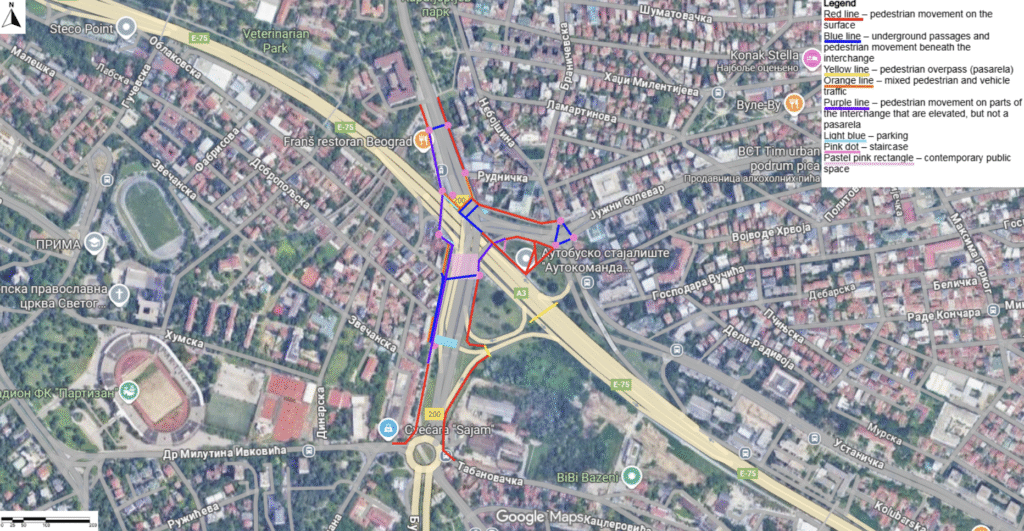This past summer, Yulia Puhareva’26 spent several weeks in Belgrade, Serbia, researching how urban highways shape city life and investigating ways to align them with a people-centric urban agenda. Her project, funded by the Grossman and Kelter funds at the Center for Urban and Global Studies, focused on the Autokomanda interchange – one of the busiest traffic nodes in the Serbian capital.
As a double major in mechanical engineering and urban studies, Yulia combined technical and design approaches in the project. Using GIS mapping, Augmented Reality modeling, and on-site photography, she analyzed the interchange’s impacts on pedestrian movement, safety, and neighborhood connectivity and developed alternatives for its transformation.
“I’m very interested in how engineering methods can serve urban design and help imagine human-centered infrastructure,” Yulia said. “Working directly in Belgrade helped me apply these methods in an institutional, cultural, and spatial context.”
The inspiration for the project began during Yulia’s semester abroad in Copenhagen, where she visited the URBAN13 initiative – an under-highway cultural hub created by local planners. Seeing a previously car-dominated space thriving as a community hub made her wonder whether similar strategies might apply in Belgrade. The city’s history of post-socialist transitions and heavy reliance on automobiles make that question challenging but urgent.


As part of the literature review, Yulia examined scholarship on post-socialist urban development, global case studies of highway removal and adaptation, and planning theories around “third spaces” and infrastructure reuse. This theoretical framework helped to identify both the opportunities and barriers specific to Belgrade. “The literature helped me realize that the challenge isn’t just technical,” she explained. “It’s also about governance, culture, and public imagination.”
Regional context was crucial to the project, and local partnerships played a significant role. Mina Cvetković (University of Belgrade ’25) worked as Yulia’s on-site collaborator, gathering field data throughout the summer, reviewing and summarizing local laws, and contributing to brainstorming sessions on redevelopment ideas. Mina’s work provided insights into how local planning regulations could limit the redesign proposals.
The materials produced included a GIS-based site analysis, graphic documentation of existing conditions, and evidence-based visual proposals for multimodal corridors. The proposed redevelopments featured pedestrian-friendly underpasses, reconfiguration of pedestrian traffic on side streets, installation of urban furniture, and both green and industrial-style public areas.

The project came with its own challenges. “At times it felt as if the system and existing regulations were made to optimize traffic flow alone, without thinking about other users of the space,” Yulia reflected. “But that made the design exploration more urgent. They pushed us to think about what kinds of interventions might actually be feasible.”
Looking forward, Yulia hopes to expand the work into a competition-ready proposal for Belgrade’s city council and to present it to academic and professional audiences. “This project was more than just solutions brainstorming,” she said. “It was about showing that even the most car-centered infrastructure can be reimagined, and that collaboration across borders and disciplines is what makes such reimagining possible.”
